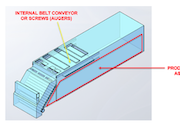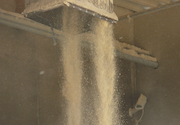| |
| |
 |
 |
| |
 |
|
June 27, 2019 |
|
| |
 DustEx Research Ltd. has been developing an online combustible dust incident database so individuals can search, sort, and understand the industries, materials, and equipment often involved in dust fires and explosions. This will help reduce financial and personal losses.
» Read more...
DustEx Research Ltd. has been developing an online combustible dust incident database so individuals can search, sort, and understand the industries, materials, and equipment often involved in dust fires and explosions. This will help reduce financial and personal losses.
» Read more...
Most industrial equipment that produces syngas or combustible gas hasn’t been properly identified and isn’t being properly regulated to prevent explosions, putting the public at risk. Cariboo Biomass Consulting’s Kevin Ericsson shares some best practices to mitigate this risk.
» Read more...
Canadian Biomass has rounded up some of the newest designs and solutions for handling combustible dust in pellet plants and other wood products manufacturing facilities in Canada.
» Read more...
Preventative maintenance and routine safety procedures can keep a dryer running longer with fewer shutdowns, and keep employees safe. Thompson Dryers’ Cathryne Scharton shares 15 tips to keep biomass dryers running longer and safer.
» Read more...
Several lessons can be learned from past silo fires. Incorrect tactics can destroy buildings and other assets, as well as result in injuries and loss of life. WPAC’s Fahimeh Yazdan Panah shares some best practices.
» Read more...
|
| |
|
| |
 Explosion protection does not differ from industry to industry based on which dust is being processed. What dictates explosion protection methods used from industry to industry is how the explosive dusts are processed/handled. Fike shares some case studies to learn from.
» Read more...
Explosion protection does not differ from industry to industry based on which dust is being processed. What dictates explosion protection methods used from industry to industry is how the explosive dusts are processed/handled. Fike shares some case studies to learn from.
» Read more... |
| |
 If a facility’s dust collection system doesn’t include appropriate and adequate hazard controls, a fire, flash-fire or explosion hazard may be present within the system. WorkSafeBC provides an overview of the controls needed to prevent explosions.
» Read more...
If a facility’s dust collection system doesn’t include appropriate and adequate hazard controls, a fire, flash-fire or explosion hazard may be present within the system. WorkSafeBC provides an overview of the controls needed to prevent explosions.
» Read more... |
| |
|
| |
|
|
| |
| |





